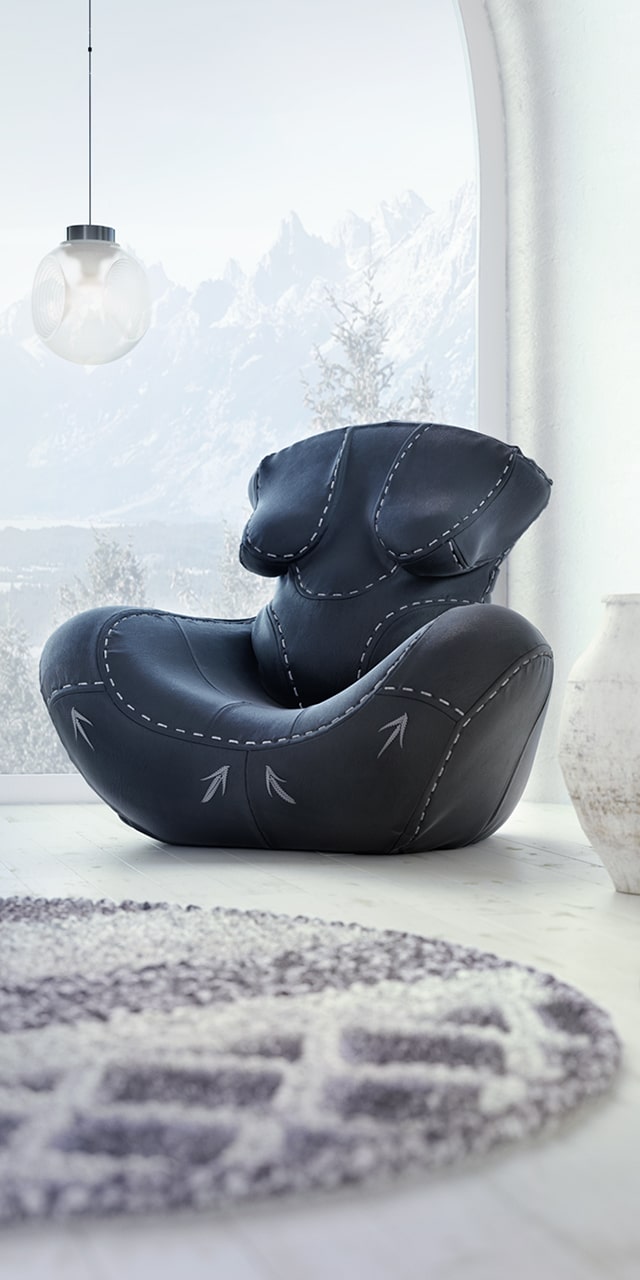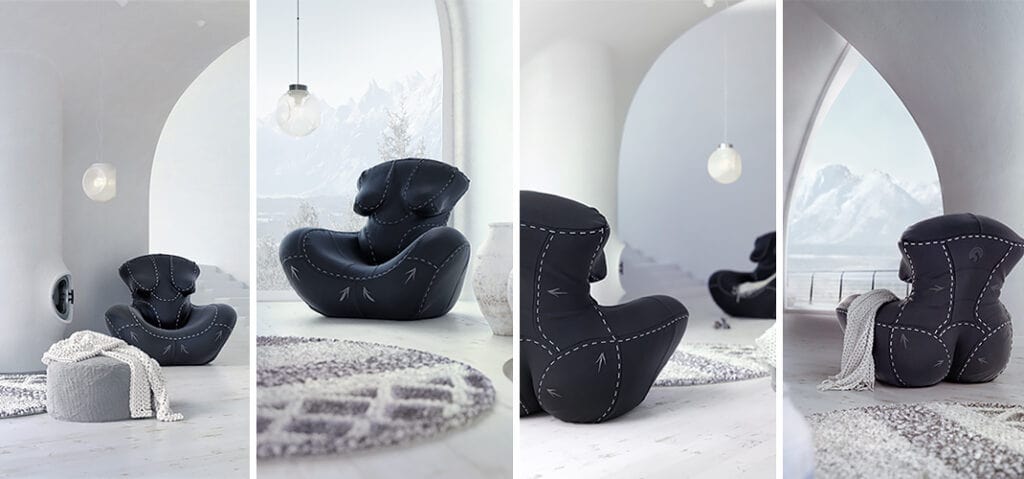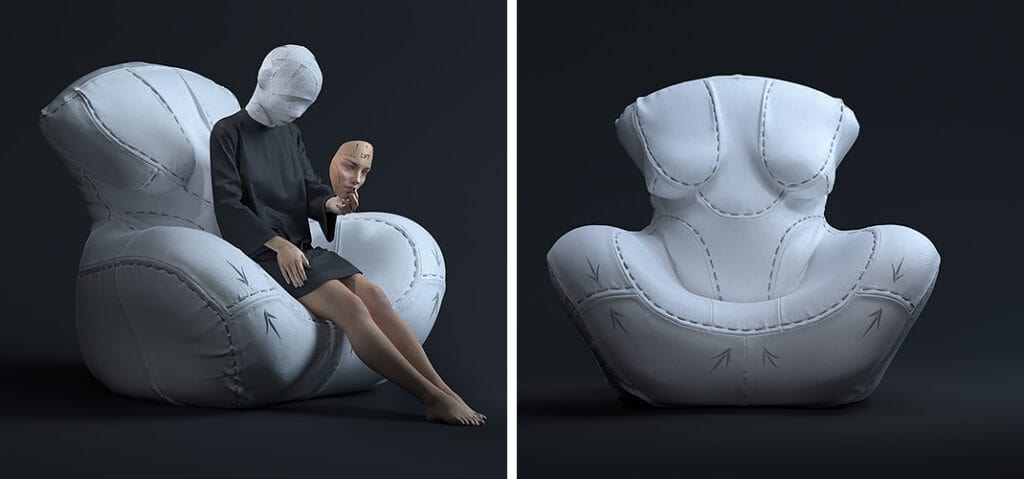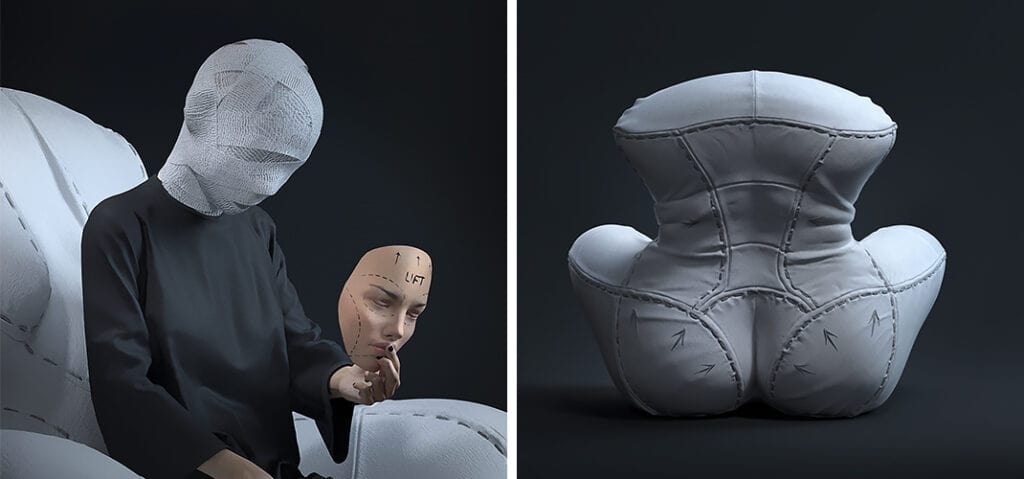ABOUT „NAGABABA” ARMCHAIR


Tell us about the creative process behind developing the Nagababa chair to express such a strong message ― how were design aspects like material and form chosen to support the story ?
The genesis of the Nagababa armchair design dates back to early childhood and presents the true story of a human (in this case a woman) trapped in beliefs about their own imperfection and inadequacy. In this particular case, the woman was my mother, who lived through the drama of my childhood into adulthood while struggling with severe Sclerosis Multiplex (MS) disease. Her body was „chained to the chair”, hence the allegory. As a sensitive boy, I felt her suffering acutely and took it very personally. I wandered through my life with this pain until I received something in terms of guidance and release in the form of this creativity. So, the design of the „Nagababa” was created in a flow of liquid, divine inspiration, and its author is God himself. This is a direct contact from him and a shortcut about a man trapped in the patterns of his mental abilities.
Social norms suggest that you are fixing something that isn’t broken at all. The woman-armchair is also a metaphorical bow to every disadvantaged person who believes that they are in this world by accident, by mistake. It is a reminder that body defects, disease, and ugliness do not make us „furniture”. What is seemingly incomplete, or has a certain deficit, is actually perfect. Nature makes no mistake in bringing „imperfections” into existence. As we say, these intrusive thoughts about God’s work and error are only an illusion that succumbs to our dormant minds.
As a co-author (God used me as a tool) of the project, I wanted to express a message to the whole world that you have a soul, we just forgot about it. Each person is perfect as they are, if they dare to transcend the mind and plunge deeper into their heart! My „joyful” work is a tribute to all people, and a full attempt to relieve the childhood pain and suffering that accompanied me throughout my life.

The Nagababa chair was initially designed in 2012 ― why do you think it continues to hold as much, or even more, relevance nearly a decade later ?
I believe that the project may contain universal truth and is not related to any particular time.
Wamhouse has developed a reputation for designs with a futuristic feel, like those featured in the industry-applauded concept project that imagined corporate logos as houses ― how was that energy incorporated into the Nagababa chair ?
Wamhouse has been in existence since 2005; it was established by two people – a graphic designer/photographer and civil engineer, who have always been fascinated by architecture and design. The author of the house is Karina Wiciak, and the author of the furniture – Mariusz Warsinski.
The name of the name of Wamhouse has many hidden symbols. The word „WaM” in Polish means „for you”, combining the first letters of my surname and first name (Warsinski & Mariusz), and „house” is the place that everyone wants to keep coming back to. We feel good here – at home. In other words, HOME is our interior, our heart! So we have: „For You Home”.

The primary purpose of the Nagababa is to represent the body’s organic shape ― can you speak into the intention behind choosing a natural material like leather to accomplish that goal ?
The choice of leather is not accidental as it symbolizes our physical shell as people – the soul covered with the body (skin).
What is your definition of beauty and how does it differ from our society’s? How is it represented in the chair ?
There is no universal definition of beauty. The beauty in the art of living is hidden. It is never obvious, and is often hidden behind symbols. This is how nature communicates with us. It goes inside, not the mind.
SOURCE: https://metcha.com/article/uncovering-mariusz-warsinski-s-divine-personal-inspirations